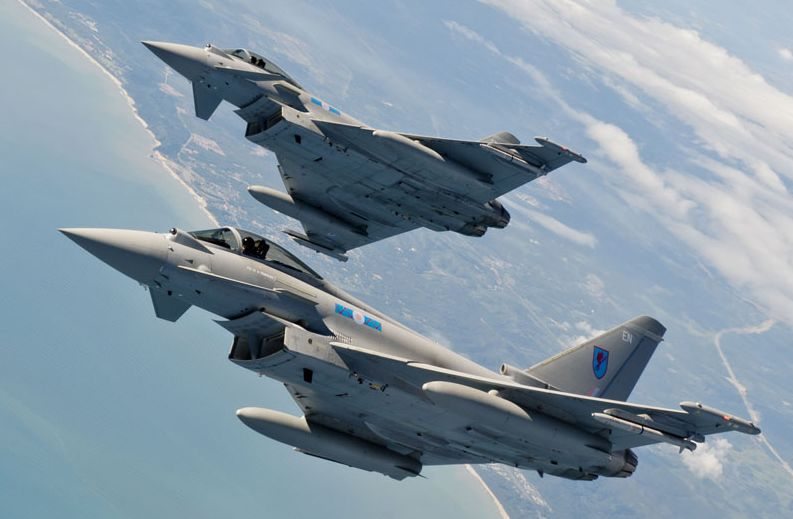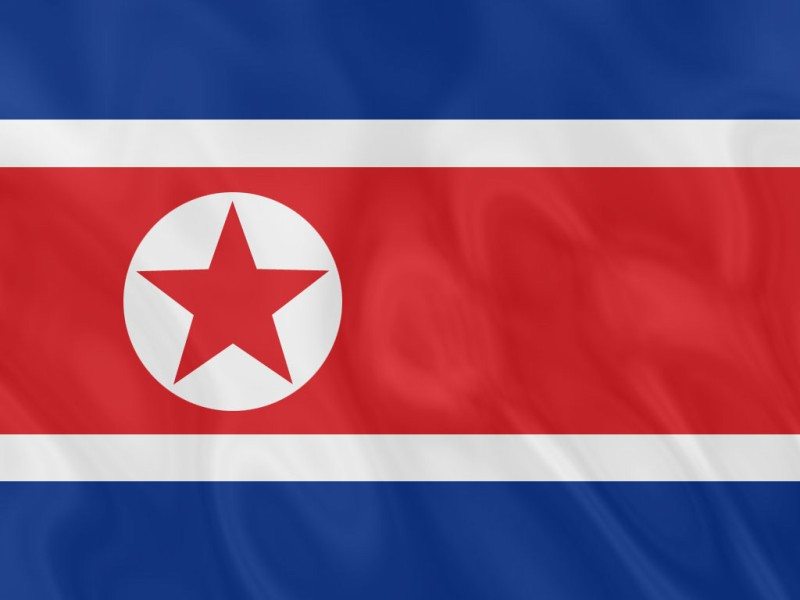6 Squadron, based at RAF Leuchars, have continued to develop the multi-role capability of Typhoon by dropping inert Paveway II bombs for the first time from the Tranche 2 version of the combat aircraft.
Pilots embarked on a series of training sorties over Cape Wrath Range last week to deliver this air to surface capability as part of ‘Combat Ready’ training work up sorties. It is the first time that 6 Sqn has dropped a bomb since it was re-formed at RAF Leuchars in 2010 as a frontline Typhoon Squadron.
Officer Commanding 6 Squadron, Wing Commander Mike Baulkwill said:
“The successful delivery of Paveway II from a Tranche 2 Typhoon is another step forward in the development of the platform’s multi-role combat capability. The last time 6 Squadron as a whole conducted end to end air to surface weapons training would have been when the Squadron was flying Jaguars, a fitting return to bombing for the “Flying Can-Openers”. Given the previous air defence role of the Station, I also suspect that it has been a long time since a Leuchars-based squadron has delivered a bomb”
The Paveway II bombing runs have been flown as part of an Operational Training Week that provides an opportunity for pilots to consolidate different phases of their multi-role training and for the Squadron as a whole to conduct readiness activity for contingent operations. The training week enables Squadron engineers and support staff to undertake training and practice operations with live and training weapons.
Senior Engineering Officer 6 Squadron, Squadron Leader Cameron Gibb explains:
“The addition of air to surface weapons activity augments the well-rehearsed air to air training we do in support of Quick Reaction Alert. Working under a more operational focus for a week or two at a time puts everyone in the right frame of mind so that when called upon to go on operations pilots, engineers and operational support staff are always ready.”
Flight Lieutenant Oli Fleming, who as an Ex Tornado GR4 pilot has operational air to ground experience, was the first 6 Squadron pilot to drop a Paveway II. He commented:
“Dropping weapons from a Tranche 2 Typhoon is a good step forward for the Force providing a multi-role capability. From an operator’s perspective, it is impressive how easy the systems are to use enabling you to drop an accurate bomb that strikes the target in a short amount of time.”
RAF Regiment Forward Air Controllers (FACs) from the RAF Honington Air Land Integration Cell (ALIC) supported the exercise, providing laser designation and target ‘talk-ons’ ensuring that the inert Paveway II weapons successfully struck their targets
The exercise formed part of ALIC FAC training for Afghanistan
ALI Cell Deputy Squadron Commander, Flight Lieutenant Quinn said:
“The opportunity to train with RAF Typhoons and achieve weapon releases within the UK is an important step forward for us. We have been able to not only train our personnel for Operation Herrick but also train for future contingency operations with this excellent multi-role platform.”
Background Information
Royal Air Force (RAF) Leuchars in Fife is primarily responsible for maintaining Quick Reaction Alert (Interceptor) North, providing crews and aircraft at high states of readiness 24 hours a day, 365 days a year, to police UK airspace and to intercept unidentified aircraft. The excellent contribution of RAF Leuchars’ personnel, both at home and abroad, provides critical support to the delivery of the RAF’s operational tasks.
No 6 Squadron officially stood up at RAF Leuchars in September 2010 as the third frontline RAF Typhoon Squadron and the first to be based in Scotland. The Squadron took over responsibility for providing the northern element of the Quick Reaction Alert force in March 2011, providing aircraft and crews on high alert to scramble and intercept unidentified aircraft approaching UK airspace. 6 Sqn is now the lead Tranche 2 Multi-Role Combat Squadron.
Typhoon provides the RAF with a multi-role combat aircraft, capable of being deployed in the full spectrum of air operations, from air policing, to peace support, through to high intensity conflict. It is currently employed on permanent ops in the Falkland Islands, UK Quick Reaction Alert North and UK Quick Reaction Alert South.
The original version of the Paveway II laser-guided bomb entered service with the RAF in the 1970s and is composed of a standard UK 450kg bomb with a computer control group fitted to the nose, supporting a laser seeker head and steerable fins. A tail unit is fitted with fins that deploy after launch from the aircraft. Laser designation of targets can be provided by the Litening III targeting pod, or from troops on the ground using a laser target designator.
Paveway II equips Tornado GR4 and Typhoon aircraft. The bomb’s guidance package takes over on release from the aircraft and steers the bomb on to the source of reflected laser energy. The bomb can be dropped from low or medium level. Typhoon’s first operational use of Paveway II was in the Libya air campaign in 2011.











